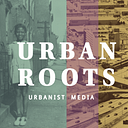Avondale: It Takes a Village
We continue our Lost Voices of Cincinnati series with an episode exploring the fraught history of Avondale.
About this episode:
The neighborhood of Avondale is still recovering from many events that took place in the mid-century, including violent race riots, white flight, and widespread housing discrimination. In this episode, we talk with experts who explain these historical events (and in the process define terms like blockbusting and redlining) and their lasting impact. And we talk to the people who are fighting hard to preserve the neighborhood’s housing stock, promote local businesses, and bring the community back together.
Guests:
Our guests include Avondale neighborhood community council president, Ms. Sandra Jones-Mitchel, Councilwoman Jan-Michelle Lemon Kearney, and Invest in Neighborhoods board president, Andria Carter. We also got a deep dive into the history of housing in Avondale by retired University of Cincinnati history professor, Dr. Fritz Casey Leninger.
Sponsors:
The Lost Voices of Cincinnati series was made possible by a Truth & Reconciliation grant from ArtsWave.
Credits:
Hosts and Executive Producer: Deqah Hussein-Wetzel
Hosts and Executive Producers: Vanessa Maria Quirk
Editor: Connor Lynch
Mix: Andrew Callaway
Links:
LISTEN TO URBAN ROOTS…
Apple | PocketCasts | Spotify | Stitcher | Youtube
SHARE URBAN ROOTS …
Website | Instagram | Twitter | Facebook| Discovered
DONATE TO URBANIST MEDIA…
Urban Roots Blog — Avondale: It Takes a Village
In our episode, Dr. Fritz Casey-Leininger, a retired University of Cincinnati history professor who interviewed Avondale residents as parts of his research, describes the dramatic demographic transitions that impacted the neighborhood. Between 1950 and 1960, the white population dropped from about 21,000 to under 9,000 while the black population soared from almost 3,500 to nearly 20,000.
White Flight — the departure of whites from places (such as urban neighborhoods or schools) increasingly or predominantly populated by minorities
The swift exodus of white upper-class Jewish folks from Avondale made single-family homes outside of the city center newly available to black families. Even though they were victims of blockbusting, redlining, and other blatant forms of housing discrimination, black people who moved to Avondale created a great neighborhood for their kids — many of whom continued to live in the neighborhood into adulthood.
In our Avondale episode, our guests, Cincinnati Councilwoman Jan-Michelle Lemon Kearney, Sandra Jones-Mitchell, Avondale Community Council president, and Andria Carter, board president of Invest in Neighborhoods share stories about their childhoods in Avondale (and North Avondale).
Nowadays the business district in Avondale is along Reading Road, a busy and congested arterial street that connects the neighborhood to other parts of the city. Back when the community was primarily Jewish, myriad synagogues and temples lined Reading Road and other neighborhood streets. In fact, if you visit Avondale today, you can still see some of these buildings; however, many now serve as churches — a testament to the neighborhood’s swift demographic shifts.
However, the riots of 1967 and 68 devastated the neighborhood, kicking off decades of disinvestment.
Over time, most of the buildings along Burnett Avenue were demolished to allow for the expansion of the University of Cincinnati’s medical buildings and the Cincinnati Zoo.
“The hospital has grown by leaps and bounds.”
Avondale today…
In 2017, the Martin Luther King, Jr. — Interstate 71 (I-71) interchange was built, in great part to increase access to the expanding medical facilities. This long term project transformed the neighborhood, dividing the community and negatively impacting many residents’ health.
Between automobile congestion along the busy streets in Avondale and the immense traffic that passes by the neighborhood from I-71, it remains to be seen what the long-term effects of this new interchange will be. But what is obvious is that Sandra, Jan-Michelle, and Andria are doing everything they can to make sure the community’s voices are heard.
“It’s going to take a village to make Avondale grow.” — Sandra Jones-Mitchell, Avondale Community Council president
